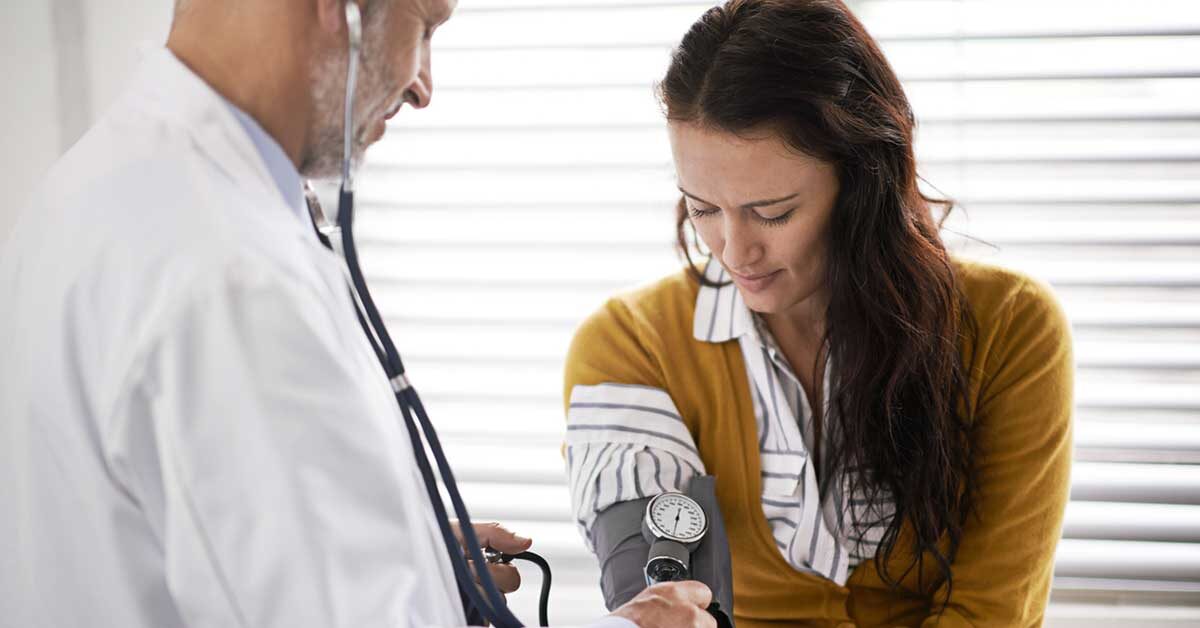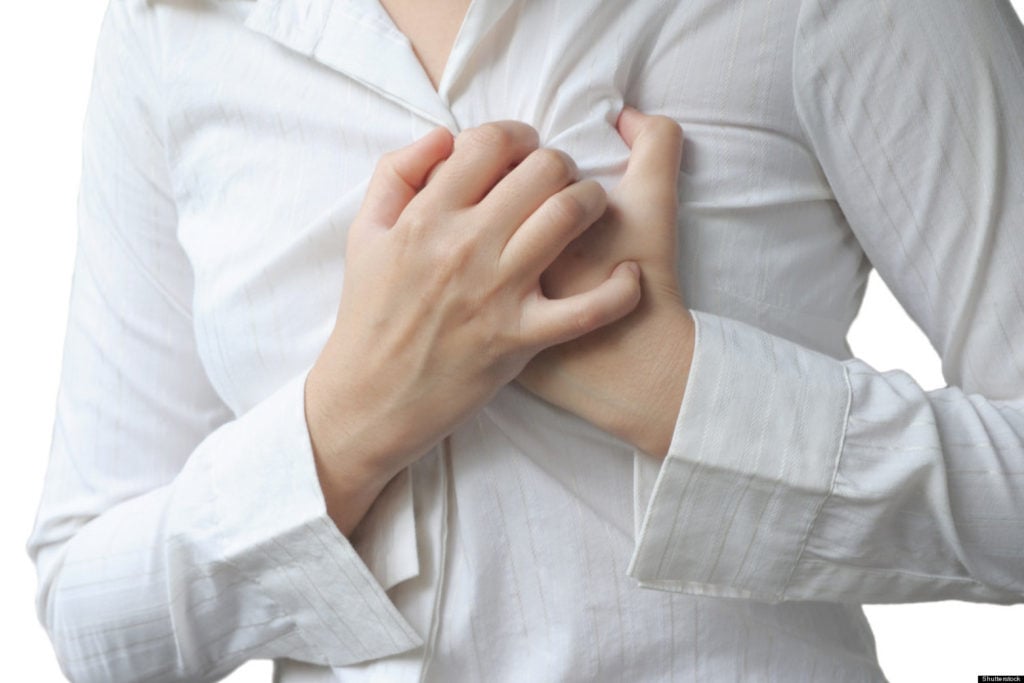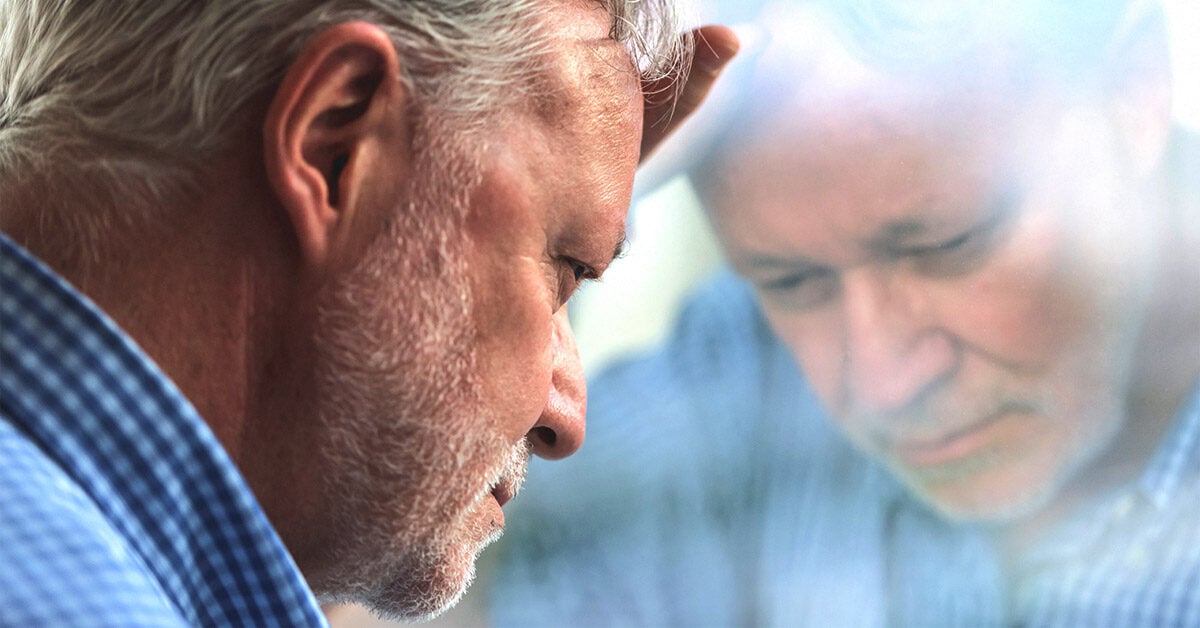Heart Attacks Striking Younger Women
Younger women are having more heart attacks, says a recent study.Researchers were surprised to find that while the heart attack rate hasdecreased among older adults, it’s risen among those ages 35-54, especiallywomen. TheAtherosclerosis Risk in Communities studyreviewed more than 28,000 hospitalizations for heart attacks in fourcities.
“This observational study found a trend in young women,” saysVirginia Colliver, M.D., cardiologist withJohns Hopkins Community Physicians-Heart Carein Bethesda, Maryland. “But the research doesn’t provide insight into whythe uptick in heart attacks is happening to younger people. I suspect ithas to do with more people having risk factors for heart disease at anearlier age.”
What Not To Do
If you feel heart attack symptoms:
- Donât delay getting help. “Women generally wait longer than men before going to the emergency room,” says Rita F. Redberg, MD, MSc, FACC, director of Women’s Cardiovascular Services for the UCSF Division of Cardiology in San Francisco. Even if you think your symptoms arenât that bad or will pass, the stakes are too high.
- Don’t drive yourself to the hospital. You need an ambulance. If you drive, you could have a wreck on the way and possibly hurt yourself or someone else.
- Donât have a friend or relative drive you, either. You may not get there fast enough.
- Donât dismiss what you feel. “Don’t worry about feeling silly if you’re wrong,” Goldberg says. You have to get it checked out right away.
“People don’t want to spend hours in an emergency room if it isn’t a heart attack,” Bairey Merz says. “But women are actually good at deciding what is typical for themselves and when to seek health care.”
Show Sources
Nieca Goldberg, MD, medical director, Joan H. Tisch Center for Womenâs Health, NYU Langone Medical Center, New York.
C. Noel Bairey Merz, MD, FACC, FAHA, director, Barbra Streisand Women’s Heart Center director, Preventive Cardiac Center professor of medicine, Cedars-Sinai Medical Center, Los Angeles.
Rita F. Redberg, MD, MSc, FACC, director, Women’s Cardiovascular Services, UCSF division of cardiology professor of medicine, UCSF School of Medicine, San Francisco editor, JAMA Internal Medicine.
When Should You See Your Doctor
Its always better to err on the side of caution if something doesnt feel right. If you have noticed that you are shorter of breath with regular activity, you should go to your general doctor or your cardiologist, says Dr. Cho. It depends on the severity and the acuteness if it has started recently or not.
When you do visit, be sure to:
- Bring a list of your symptoms and when they are occurring.
- Let them know about any related family history of heart disease.
- Talk about stress or anything going on in your life that might contribute to a problem.
Your doctor likely will listen to your symptoms and check your pulse and blood pressure. They may order blood work, which will show whether your heart is damaged. They also may use an electrocardiogram to tell whether the electrical activity of your heart is normal, or an echocardiogram to view images of the heart to see if damage has occurred. Some patients may get stress tests, a coronary computed tomography angiogram or a cardiac catheterization.All of this is important in identifying any problems and taking steps to intervene before a possible heart attack.
Also Check: What Is The Target Heart Rate Zone
Let’s Win This Together
Heart disease is the No. 1 killer of women. Support the innovative research, education and prevention services that protect the women we love.
Although men and women can experience chest pressure that feels like an elephant sitting across the chest, women can experience a heart attack without chest pressure, said Nieca Goldberg, M.D., medical director for the Joan H. Tisch Center for Women’s Health at NYUs Langone Medical Center and an American Heart Association volunteer. Instead they may experience shortness of breath, pressure or pain in the lower chest or upper abdomen, dizziness, lightheadedness or fainting, upper back pressure or extreme fatigue.
Even when the signs are subtle, the consequences can be deadly, especially if the victim doesnt get help right away.
The Four Silent Symptoms Of A Heart Attack

In addition to extreme fatigue, here are the most common symptoms of heart attacks in women, according to the American Heart Association, so you know what to look for. Note that you may not have all of them:
All of these signs are “silent,” in the sense that they are easy to ignore especially if you dont want to believe youre having a heart attack. Another reason people think of them as silent signs of a heart attack is that individually, these symptoms could all be attributed to other conditions. The chest pain, in particular, may not be the dramatic, elephant-on-my-chest stereotypical male heart attack pain, says Lichtman.
And the sheer number of these ambiguous symptoms may be one of the reasons many women dont know theyre having a heart attack, according to Lichtmans research there are other things bothering them, so they blow off the chest pain or pressure symptom, says Lichtman.
You May Like: When Do Babies Heart Rate Slow Down
Additional Heart Attack Symptoms That Women May Experience
In addition to the common heart attack symptoms, women may experience one or more of the following:
- Tightness, squeezing or pressure in the chest, throat, upper abdomen or neck
- Nausea and indigestion-like symptoms, including heartburn or an upset stomach
- Lightheadedness, dizziness, fainting or sweating that occurs with or without chest pain
- Numbing or tingling sensation in the left arm
- Difficulty breathing or shortness of breath that occurs with or without exertion
- Waking during the night out of breath
- Unexplained severe anxiety, fatigue or overall lack of energy
Want to know more about your risk for heart disease? Take a free HeartAware online risk assessment. Learn more about our cardiac care at UNC Rex Healthcare and UNC Medical Center or find a cardiologist near you.
Read More On Women’s Health
Again and again, data from large numbers of people in different countries show that the odds of surviving a heart attack are stacked differently if you are a woman.
To end this injustice requires change.
“We must ensure that heart tests and treatments are as equally well proven in women as they are in men and that we tackle the persistent biases that pervade society and healthcare – because heart attacks happen to women too.
Around 100,000 people a year are admitted to hospital after a heart attack in the UK.
Experts warn current tests were developed using data on men only, meaning they are less accurate for women.
Don’t Miss: How Much Does Bypass Heart Surgery Cost
What Is The Difference Between A Heart Attack And Cardiac Arrest
A heart attack is not the same as cardiac arrest. In a heart attack, the heart keeps beating. The person has a pulse and usually stays conscious . During cardiac arrest, the heart stops beating. The person has no pulse and is unconscious .
A defibrillator is a machine that sends an electrical shock to the heart to restore normal rhythm. This treatment must be given as soon as possible. For cardiac arrest, call 911 and begin CPR right away. The American Heart Association says that with “hands only” CPR, anyone can give lifesaving treatment to someone having cardiac arrest. Push hard and fast in the center of the chest and keep going until emergency personnel arrive. Do not give CPR for a heart attack.
Angina In Women Can Be Different Than Men
Angina is a warning sign of heart disease, and recognizing it and getting treated early may prevent a heart attack.
Coronary artery disease occurs when fatty build-up in your coronary arteries, called plaque, prevents adequate blood flow thats needed to provide oxygen to your heart muscle.
As coronary artery disease progresses, you may have tightness, pressure or discomfort in your chest during physical activity or when stressed. It may go away shortly after you stop the activity or get rid of the stress. If the blockages worsen, it may take longer for the pain to go away, or you might experience pain at rest.
Angina symptoms in women can also include nausea, vomiting, pain in the neck, jaw, throat, abdomen or back and feeling out of breath. Once the extra demand for blood and oxygen stops, so do the symptoms. These symptoms are not always recognized as a symptom of a heart condition in women. As a result, treatment for women can be delayed.
Read Also: Elevated Heart Rate When Sick
When To See A Doctor
The British Heart Foundation recommend all women over 40 years of age have regular checks with their doctor. This helps identify risk factors early so that they can be treated. Early intervention reduces the chances of a cardiac event.
Anyone who notices the warning signs of a heart attack, such as the following, should see a doctor immediately:
- unusual fatigue
- shortness of breath
- upper body pain
A doctor will note symptoms, check blood pressure and heart rate, and may order blood tests or use an electrocardiogram to see the hearts electrical activity.
Only 65 percent of women would call emergency services if they suspected they were having a heart attack, according to a 2012 survey .
Emergency treatment can save lives. Anyone noticing the following symptoms should call an ambulance immediately, especially if the signs are present for 5 minutes or more:
- chest pain or discomfort
- pain in the upper body, including arms, back, neck, jaw, or shoulder
- difficulty breathing
Understand Your Risk Of Heart Disease
Heart disease is the number one cause of death for women and men. But both heart attacks and heart disease can appear differently in women than in men. This disparity means that women are more likely to have undiagnosed heart conditions, and they may not even know when theyre at risk for heart attack.
If youre a woman, its important to educate yourself about your heart health. Risk factors that increase your chances of heart disease and heart attack include:
- Depression
Heart disease is common, but its preventable in many cases. Our team is dedicated to helping you strengthen your heart and live your healthiest life.
We partner with you, evaluating your medical history, family history, and current condition to propose a heart-healthy plan thats right for you. Managing pre-existing conditions and making a range of healthy lifestyle choices can make a big difference for your heart and help reduce your risk of heart attack.
Trust your heart health to our team at NJ Cardiovascular Institute. To learn more about the risks of heart disease and how to spot a heart attack, book an appointment at one of our offices in Newark, Secaucus, or Paramus, New Jersey. Use the online scheduler or give us a call.
You Might Also Enjoy…
Read Also: What Is A Heart Attack Caused By
Do Women Experience Different Heart Attack Symptoms
It is important to remember that everyone experiences different heart attack symptoms. The symptoms of a subsequent heart attack may be different from the first.
Women are more likely than men to experience heart attack symptoms without chest discomfort. If they do have tightness, pressure or discomfort in the chest, this discomfort may not always be severe or even the most noticeable symptom.
Sometimes a person can have no heart attack symptoms at all. In these cases the heart attack isn’t diagnosed until it is picked up by a clinician at a later date. This is sometimes called a silent heart attack.
What Are The Symptoms Of Stroke

The most common symptoms of a stroke are:
- Weakness or numbness of the face, arm, or leg on one side of the body
- Loss of vision or dimming in one or both eyes
- Loss of speech, difficulty talking, or understanding what others are saying
- Sudden, severe headache with no known cause
- Loss of balance or unstable walking, usually combined with another symptom
You May Like: What Drugs Should Be Avoided In Heart Failure
Symptoms Of A Heart Attack In Women
Both women and men who have a heart attack often have chest pain. However, in addition to chest pain, women are more likely to have these symptoms:
- Pain in the shoulder, back, or arm
- Shortness of breath
These symptoms can happen together with chest pain or without any chest pain.
Many women may not recognize that these are symptoms of a heart attack. Women may not get emergency treatment right away if they downplay their symptoms and delay going to the hospital, or if the usual initial screening tests performed at the hospital may not detect an early or atypical heart attack. Because of this, women have a higher risk of serious health problems after a heart attack.
It is important to if you have these symptoms. Early treatment can limit damage to your heart and can save your life.
Sociology And Heart Attacks
Overlooked, yet crucial, factors in understanding how heart attacks in women are different than men include psychology and sociology.
In an interview from theUniversity of Utah, Dr. John Ryan, director of the Pulmonary Hypertension Center at the university, says that women experience these , but tend to ignore them more.
Ryan added that theres a tendency to dismiss the symptoms, so therefore the symptoms often need to be more severe or more advanced before women present them.
However, by the time women allow these symptoms to become severe, the symptoms can change and evolve. Pain in the left side of the chest can move into the center of the chest, radiating down both arms. If you experience excessive sweating, consult your primary care or healthcare provider as this symptom is often mistaken as a symptom of menopause and ignored.
Don’t Miss: What Is Afib After Open Heart Surgery
Signs And Symptoms Of Heart Attack
If you have any of these signs, call 9-1-1 and get to a hospital right away.
What Is A Heart Attack
Heart attack signs and symptoms in men and women: Chest pain or discomfort Shortness of breath Pain or discomfort in the jaw, neck, back, arm, or shoulder Feeling nauseous, light-headed, or unusually tired.
A heart attack, also called a myocardial infarction, happens when a part of the heart muscle doesnt get enough blood.
The more time that passes without treatment to restore blood flow, the greater the damage to the heart muscle.
Coronary artery disease is the main cause of heart attack. A less common cause is a severe spasm, or sudden contraction, of a coronary artery that can stop blood flow to the heart muscle.
You May Like: What’s Resting Heart Rate
Indigestion Nausea And Vomiting
Another common symptom of heart attack in women is indigestion, nausea or vomiting. Women may experience any or all of these symptoms during a heart attack.
Stomach ailments can be associated with a number of other diseases and illnesses, but in this case, it is much more important to pay attention to your body if you experience this symptom in combination with any of the other symptoms described.
How Does A Stroke Occur
There are two types of stroke.
- Ischemic stroke is similar to a heart attack, except it occurs in the blood vessels of the brain. Clots can form in the brain’s blood vessels, in blood vessels leading to the brain, or even in blood vessels elsewhere in the body and then travel to the brain. These clots block blood flow to the brain’s cells. Ischemic stroke can also occur when too much plaque clogs the brain’s blood vessels. About 80% of all strokes are ischemic.
- Hemorrhagic strokes occur when a blood vessel in the brain breaks or ruptures. The result is blood seeping into the brain tissue, causing damage to brain cells. The most common causes of hemorrhagic stroke are high blood pressure and brain aneurysms. An aneurysm is a weakness or thinness in the blood vessel wall.
Recommended Reading: What Is A Dangerously High Heart Rate
Heart Attack And Women
A heart attack happens when blood flow in an artery to the heart is blocked by a blood clot or plaque, and the heart muscle begins to die. Women are more likely than men to die after a heart attack. But if you get help quickly, treatment can save your life and prevent permanent damage to your heart.
Symptoms Of A Heart Attack

Symptoms of a heart attack can include:
- chest pain a feeling of pressure, heaviness, tightness or squeezing across your chest
- pain in other parts of the body it can feel as if the pain is spreading from your chest to your arms , jaw, neck, back and tummy
- feeling lightheaded or dizzy
- feeling sick or being sick
- an overwhelming feeling of anxiety
- coughing or wheezing
The chest pain is often severe, but some people may only experience minor pain, similar to indigestion.
While the most common symptom in both men and women is chest pain, women are more likely to have other symptoms such as shortness of breath, feeling or being sick and back or jaw pain.
Recommended Reading: What Can Cause Congestive Heart Failure
